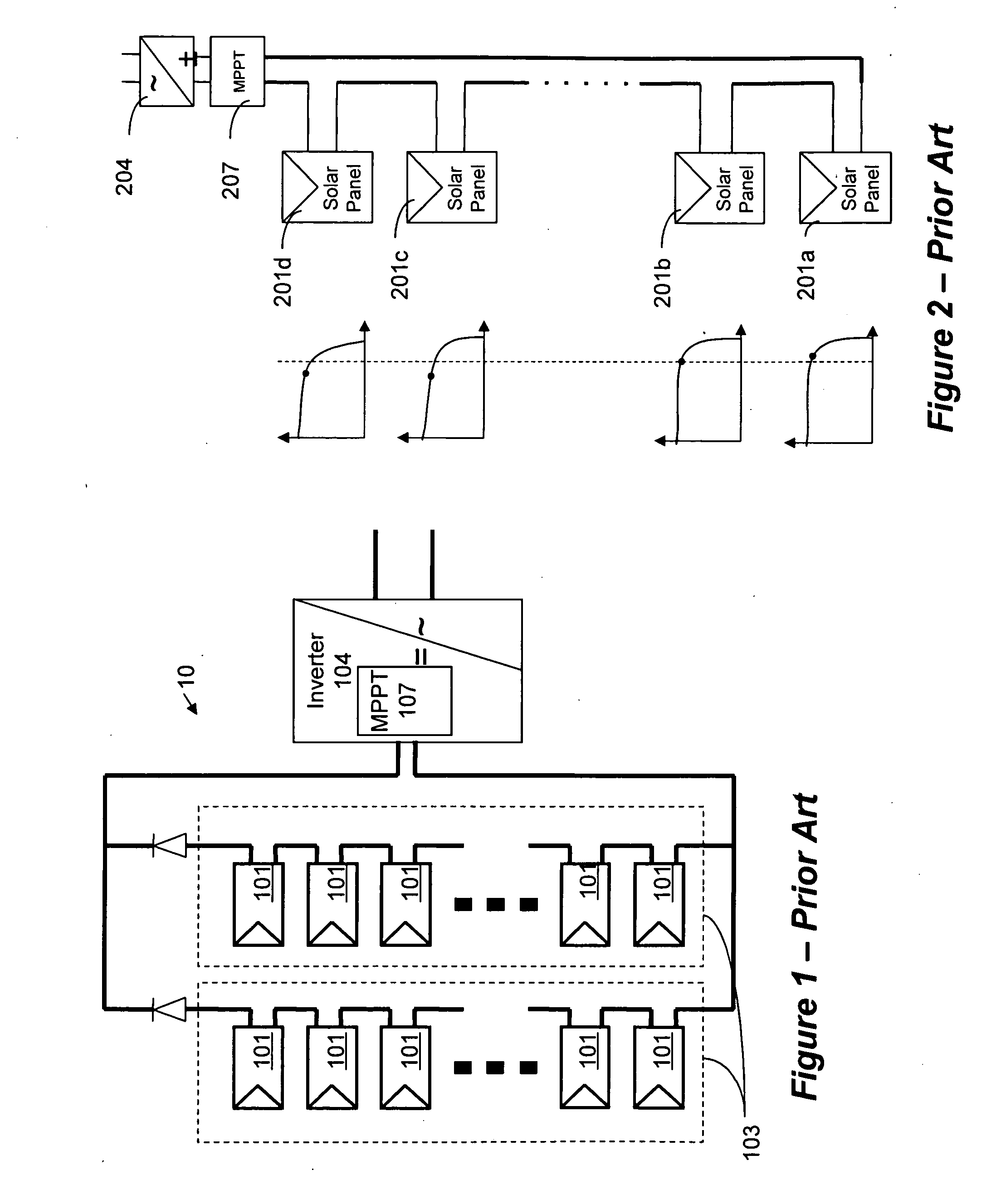Distributed power harvesting systems using DC power sources
a dc power source and power harvesting technology, applied in the direction of dc-ac conversion without reversal, coupling device connection, sustainable building, etc., can solve the problems of large conduction loss, inability to operate at best achievable efficiency, and inability to optimize the power draw of each individual panel, so as to improve the reliability of components within the load and ensure the effect of operation voltag
- Summary
- Abstract
- Description
- Claims
- Application Information
AI Technical Summary
Benefits of technology
Problems solved by technology
Method used
Image
Examples
Embodiment Construction
[0064]The topology provided by the subject invention solves many of the problems associated with, and has many advantages over, the prior art topologies. For example, the inventive topology enables serially connecting mismatched power sources, such as mismatched solar panels, panel of different models and power ratings, and even panels from different manufacturers and semiconductor materials. It allows serial connection of sources operating under different conditions, such as, e.g., solar panels exposed to different light or temperature conditions. It also enables installations of serially connected panels at different orientations or different sections of the roof or structure. This and other features and advantages will become apparent from the following detailed description.
[0065]Aspects of the present invention provide a system and method for combining power from multiple DC power sources into a single power supply. According to aspects of the present invention, each DC power so...
PUM
| Property | Measurement | Unit |
|---|---|---|
| Temperature | aaaaa | aaaaa |
| Power | aaaaa | aaaaa |
| Current | aaaaa | aaaaa |
Abstract
Description
Claims
Application Information
 Login to View More
Login to View More - R&D
- Intellectual Property
- Life Sciences
- Materials
- Tech Scout
- Unparalleled Data Quality
- Higher Quality Content
- 60% Fewer Hallucinations
Browse by: Latest US Patents, China's latest patents, Technical Efficacy Thesaurus, Application Domain, Technology Topic, Popular Technical Reports.
© 2025 PatSnap. All rights reserved.Legal|Privacy policy|Modern Slavery Act Transparency Statement|Sitemap|About US| Contact US: help@patsnap.com



